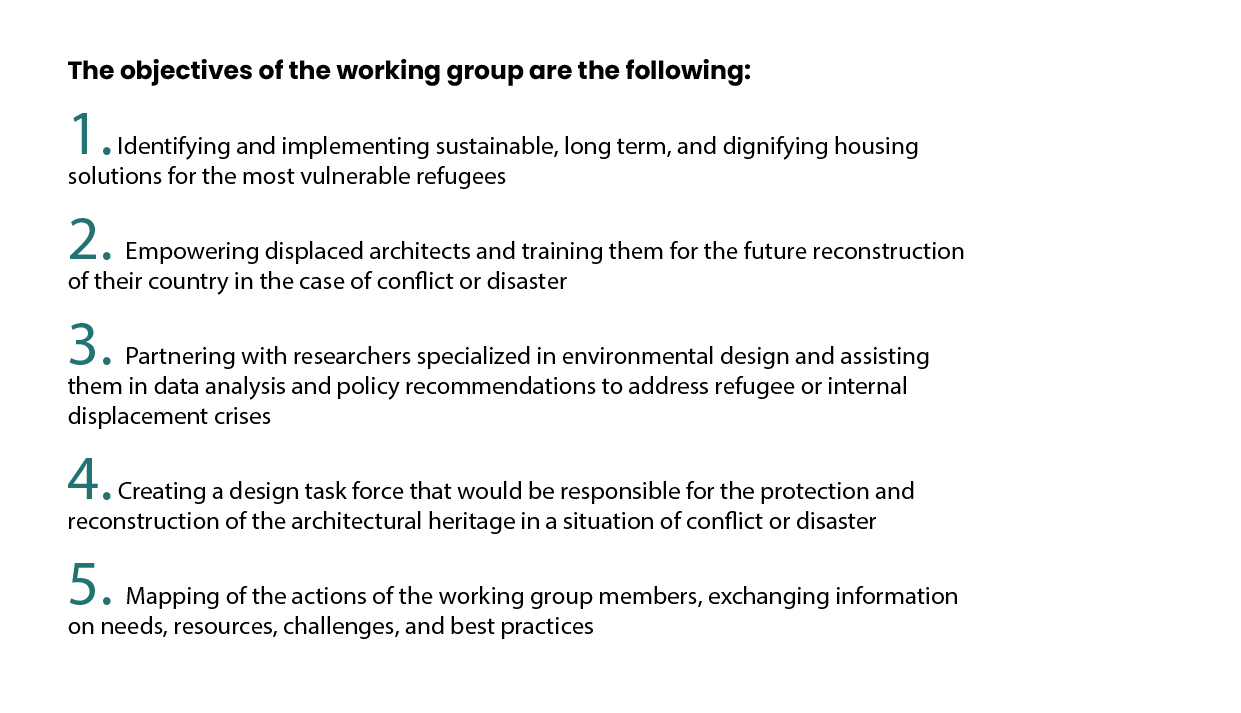
Context
According to the UNHCR, as of May 2022, 100 million individuals were forcibly displaced worldwide as a result of persecution, conflict, violence, human rights violations or climate change. This accounts for an increase of 10.7 million people displaced from the end of the previous year, propelled by the war in Ukraine and other deadly conflicts. The purpose of ASF Int being to “enable vulnerable communities access to architectural services” and “increase their resilience” and the strength of the organization residing in its international reach through its member organizations, the migration and internal displacement group provides a space of exchange and planning for efficient and strategic course of action in response to these urging issues that characterize our times. Thirteen participant member organizations — ASF France, ASF Sweden, ASF Czech, ASF Italy, ASF Germany, ASF Portugal, ASF Poland, and ASF Quebec — are part of the working group.
Objectives
The questions that oriented the group objectives are: What is the role of architects in a crisis of forced displacement or in disaster response? How do ASF member organizations respond to issues of urban vulnerability such as settling the forcibly displaced after a conflict or a disaster or housing the homeless? What type of expertise and support can the migration and internal displacement working group offer to members?

Achievements
- Writing a common statement conveying ASF’s position on migration
- Creating a network of Ukraine architects displaced in different parts of the world and organizing several meetings with them aiming at understanding their needs
- Creating a task force of experts in post conflict reconstruction for the training of Ukraine architects
- Co-creating with Cifal York a workshop for Syrian and Turkish architects, training them in their response to the 2023 earthquake that hit their countries. Recruiting for the workshop more than 40 researchers and experts
- Instigating MoUs with several organizations such as Cifal-York University and the Institute of Humanitarian Affairs in Fordham University Supporting the creation and the incorporation of ASF Lebanon and helping the members find funding opportunities
- Organizing the first international colloquium on migration that will be held during the GA 2023 in Copenhagen in which members of the migration and IDP group will share their experiences in responding to forced displacement
- Creating a “guideline for migration and disaster response” for all member organizations based on the colloquium
Preliminary recommendations for the group members
a) Search for invisible vulnerability: the invisible displaced people are those who are the most in need. They usually don’t even have enough resources to leave their country of origin;
b) keep in mind that each crisis receives a lot of attention at the beginning, but interest inevitably decreases. Maintain the pressure on authorities and donors to maintain the focus on each crisis;
c) the temporary will become permanent. Design transitional solutions that could be transformed into permanent spaces, especially for lower class people; and finally,
d) keep in mind that there are classes of refugees, white and non-white. They receive different attention, dissimilar hosting strategies, less hospitality, and have less rights and privileges.
Common Statement of ASF Members on Forced Migration
